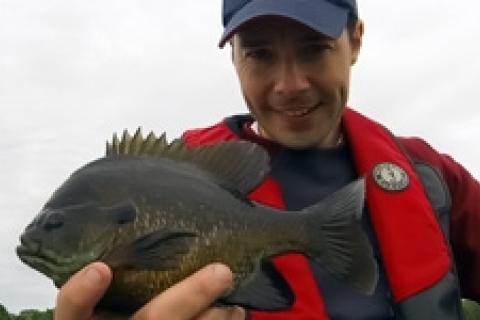
 When it comes to fishing, the idea of a fish-holding spot is a powerful, deeply rooted concept. I know I've got hundreds of waypoints in my GPS/sonar units that denote go-to walleye, bass, muskie, pike, catfish and panfish spots. This said, I have even more waypoints that I use to mark the productive periphery areas surrounding these spots, which is the topic of this blog.
When it comes to fishing, the idea of a fish-holding spot is a powerful, deeply rooted concept. I know I've got hundreds of waypoints in my GPS/sonar units that denote go-to walleye, bass, muskie, pike, catfish and panfish spots. This said, I have even more waypoints that I use to mark the productive periphery areas surrounding these spots, which is the topic of this blog.
The difference between a spot and an area often comes down to size. An area is bigger while a spot is smaller. Another way to put it is that an area surrounds and includes spots. A spot might be a feeding zone for a fish, but the surrounding area is its habitat and part of its home range, so to speak. Where I'm going with this is that when fish aren't relating to spots, you'll likely find them somewhere nearby. Here's an example.
Recently I was out exploring a lake. I came up on a 6-foot hump covered with weeds that was about 20 feet wide by 30 feet long. I fished its edges and pitched a jig into lanes in the weeds and caught several decent bluegills. Then I began fishing beyond the hump and exploring the surrounding deeper flat that slowly tapered from 12 to 15 feet. It was here where I found the biggest bluegills, lounging in the water surrounding the hump.
This example is one of dozens of experiences where fishing the area surrounding classic fish structure (e.g., points, humps, bars) or cover (e.g., logs, lay-downs, docks, weed beds) has yielded the best fish of the day. This approach works for every species I target from big apex predators, like muskie and pike, to mid-range hunters, like walleye and bass, down to smaller species, like panfish.
Another benefit of exploring areas that surround spots is they provide a better understanding of why spots hold fish, and the reason that some spots are better than others. This helps "see the forest through the trees," so to speak.
I've also found that investigating areas often leads me to other fish-holding nuggets I didn't know about previously. These are often smaller, secondary locations, like a deep reef in close proximity to a shallow hump.
The next time you're on the water be sure to study the areas surrounding your favorite spots. Odds are you'll contact a few more fish and, in some cases, learn about some new productive sites to add to your milk-run.
- 2646 views

